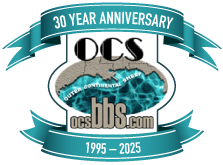Pressure Rise to Surface after Cementing Leads to Burst Casing and Loss of Control
Effective Date: 1/28/2005
| U.S. Department of the Interior |
| Safety Alert No. 226 January 28, 2005 | Contact: Jack Williams |
Pressure Rise to Surface after Cementing Leads to Burst Casing and Loss of Control
Recently, intermediate casing was set and cemented across productive zones in an offshore well. After the cementing, pressure was observed to be rising on the surface casing annulus, reaching about
1,200 psi. After a period of time, the pressure appeared to break and decline slowly until no annulus pressure was indicated on the driller’s console gauges. A supervisor then noted that an independent gauge on the choke was indicating 3,000 psi on the annulus. This reading was immediately followed by an explosion as the surface casing split below the wellhead, allowing the well to flow uncontrolled.
The burst casing and loss of control were caused by pressure migration from a shallow reservoir that had been pressure-charged during previous operations. This sand was logged, but its productive nature was overlooked during analysis and it was left uncovered by the cementing operation. The casing was found to have been extensively worn during operations, allowing failure at pressures significantly below rated burst. This wear was probably accelerated because of a rig misalignment discovered after the incident. Despite significant metal recovery from the ditch magnet, the casing was not tested for over 30 days. The driller’s gauges returned a false pressure reading, probably because of a leak in the hydraulic system that allowed the pressure to appear to decline when it was actually rising.
A full investigation of this incident was conducted and the report is available on the MMS website: http://www.gomr.boemre.gov/homepg/offshore/safety/acc_repo/accindex.html
The MMS recommends to Operators the following actions:
- Close examination of all logs, especially prior to cementing, is recommended to ensure no unexpected shallow zones are productive. Adjustment of the cementing program is recommended if such zones are identified.
- Careful attention to rig alignment, monitoring of ditch magnet recoveries, and frequent examination of the drilling wear bushing are recommended to identify potentially worn casing. These steps are particularly important when extended drilling operations occur within a string of casing.
- It is recommended that the main hydraulic gauges of a rig be routinely checked to ensure the lines are full, and that no hydraulic leaks are presen t.






